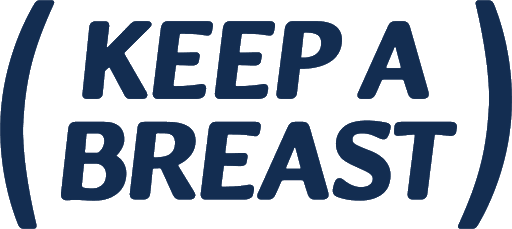6 Ways To Rid Your Life Of Toxins
(Originally written for and posted on Mind Body Green)
When it comes to the products we use every single day, it might be the most important one. Here’s the deal, products that contain potentially harmful carcinogens generally contain a small amount, but when we compound our bodies with several products that contain that small amount, and use them every day, that so-called “safe” amount becomes a little more complicated.
According to the Environmental Working Group, the average women uses 12 products a day with an average of 168 different ingredients, and the average man uses 6 products daily with an average of 85 unique ingredients. That’s a lot of ingredients we put on our skin every day, most of which make it into our blood stream. This isn’t just adults, EWG found that teenagers are being exposed to many chemicals these days. In a study done with 20 teenage girls, they found 16 potentially toxic chemicals (such as parabens, phthalates, and triclosan) found in their blood and urine samples.
This may seem daunting, but luckily for us there are many great organizations working to bring more regulations to the personal care product industry, educate people on these chemicals, and give them safer alternatives. The easiest way to start is to ask yourself which products you tend to use every day and do your best to cut down your exposure to potential carcinogens in those products. Here at Keep A Breast and Non Toxic Revolution, we strive to educate people on daily thing they can do to live non toxic and lower your risk of breast cancer and other diseases. I’ve rounded up a few that I use every day on my body and in my home, and wanted to share them with you!
YOUR BODY
Deodorant
We use it every day (unless we forget) and have since around puberty, deodorant keeps us from smelling rank as a courtesy to our fellow humans, but at what cost? Many toxins have been found in deodorants, especially antiperspirants that are linked to Alzheimer’s, breast cancer, and birth defects. These days there are many natural deodorants that are effective and leave out ingredients like aluminum, triclosan, and parabens, pledging to protect out blood stream and lymphatic systems.
Sunscreen:
Another product that we all need on a daily basis is sunscreen, but they aren’t all created equal. Vitamin A is great for us when we eat it, but not when we put it on our skin because it can encourage the growth of skin tumors, so watch out for sunscreens with vitamin A. Avoid the hidden chemicals in the ingredient ‘Fragrance’, oxybenzone and it’s allergenic effects, and spray on sunscreens that release nanoparticles in the air and on you. Say yes to Zinc Oxide, Ecamsule, Avobenzone, and broad spectrum sunscreen.
Toothpaste
We use toothpaste 2-3 times a day, so this is another crucial one to switch to non toxic. You heard about triclosan in deodorant as well, but this is a big one in toothpaste. Triclosan has been proven to help prevent gingivitis, but has also been linked to concerns of antibiotic resistance and endocrine disruption, which can potentially cause breast, ovarian, prostate, and testicular cancer. Another ingredient to look out for is Sodium Lauryl Sulfate (SLS), which is the main creator of the foaming in toothpastes. SLS often causes skin irritation and canker sores. Again, there are many great types of toothpaste that avoid these harmful ingredients and still clean and whiten your teeth.
YOUR HOME
Dish Soap
One daily routine we all have in common is eating. So many of us have to do the dirty deed of washing dishes afterwards and whatever dish soap we choose to use is touching and soaking everything that touches our food. Do you want your vitamins and nutrients mixed with toxic chemicals? No way! You’re going to see a pattern in ingredients to avoid here, which makes it easier, right? Many dish soaps contain SLS, triclosan and fragrance, which you’ve heard about in some body products. If the scent of something isn’t made with essential oils, the safest bet is to skip it and go with unscented. Take a look at a list of safe dish soap choices!
Candles
Candles can brighten up our home space and work space and just overall brighten up our day. You may have gotten or given some for gifts during the holiday season and let’s be real, we all love getting a candle. But, candles have their own hidden secrets. Most candles are made from paraffin wax, which creates potent and highly toxic toluene and benzene when burned, the same fumes that are created from diesel fuel. Many are made from petroleum and chemically bleached before they can become wax. So strange, right? The better alternatives are beeswax or soy wax candles that aren’t chemically processed. Another potential problem is the fragrance used in candles. Fragrance is already a proprietary ingredient, meaning they don’t have to list what chemicals are included, but candles don’t have to list anything. The safest candle is local and small batch beeswax or soy wax unscented or using essential oils diffusers.
All-Purpose Cleaner
The all-purpose cleaner is an easy go-to for that quick clean when you get home or have people over, but spraying these cleaners make for some serious toxic indoor air if we don’t read the labels. Many mainstream cleaners contain Ammonium Hydroxide, Ethanolamine, Propylene Glycol Methyl, and Dipropylene Glycol Butyl Ether. These ingredients can cause harmful effects from allergies, irritations and respiratory effects to cancer, damage to DNA, and developmental, endocrine and reproductive effects. This stuff is no joke and we definitely don’t want it floating around our indoor air and hanging out on every surface we touch. EWG has a great database for safe cleaners and can steer you in the right direction for a safe indoor environment.

